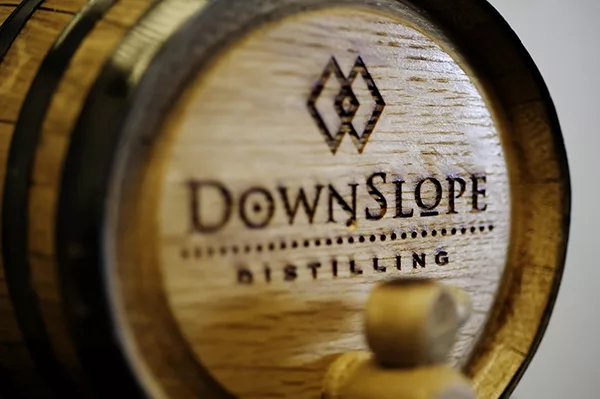
As the newest member of the Dalkita team, Sam Yslas was sent to DownSlope to get a better idea of the distillation process and the scope of the puzzle our clients face when putting together a distillery project. These are her notes from the experience.
Plan Ahead
To ensure you make the best use of the opportunity to speak and interact with the distillers, architect, and founders of the distillery. Do your homework. Go into class with a general idea of the distillation process and ask a ton of questions. If anything is inconsistent with your own knowledge – track down the reason why it is different. Is it a personal preference? Air pressure? A business decision?
Itinerary – Day 1
There are a lot of steps and time involved in each bottle purchased off the shelf. Start out Day 1 with an overview of the “How To’s” of distilling. Detail will be given on washes, mashes, pH levels, fermentation, etc.
A tour of the facility shows each step and piece of equipment. Once everyone understands how the process works, distillation and cuts are discussed. I liked trying the 24 different stages of DownSlope’s distilling process. Tasting to determine where each of the Heads, Hearts and Tails begin and end. It gave me a chance to see what I like in my spirit and what off flavors or smells to avoid, in both distilling and tasting.
We wrapped up the day with a tasting of all of DownSlope’s products. It was a staggering number of products. I thought it was interesting hearing about each product and the decisions they made to get to the line up they offer.
Itinerary – Day 2
Get into the nuts and bolts of building out a space for *YOUR* distillery.
“How much alcohol can I store in this building?” Knowing the upper limitations in a distillery building is very important – but is often overlooked.
They will remind you many times during this class that Sprinklers are wildly important, with a nice video showing why. *Que the burning Rack Houses in Kentucky*
Any experience in construction or building trades will tell you that “Codes” can not be ignored. This class shows the ins and outs of all the codes that may pertain to your physical space in creating and operating a distilled spirits plant – (DSP) – where you create or store alcoholic spirits.
Maximum Allowable Quantities are very important when building a facility to produce or store your spirit. Dalkita can help you sort through the questions of What is enough? What is too much? Am I utilizing this space or piece of equipment to its potential? All questions that need to be explored and answered in some way on your journey to getting a DSP up and running.
Occupancy Classification is another key concept. Is my building fit for this size operation? Would I be able to make this an H-3 Occupancy by putting in a firewall? Excellent questions. The answer can vary depending on the state, county or even city ordinances.
What code applies to *MY* building? IBC, IFC, IMC, IEBC, IFGC, IPC? Can I choose the IBC and just go by that? Unfortunately, it would be incorrect to infer only one code applies to your building. Usually, several specialty codes cross-reference each other. Dalkita is a specialty architecture firm with over a decade of experience all over the U.S. and Canada designing or consulting on distilleries. They have licenses in over 18 states and have worked on a range of project sizes.
Each distillery is set up differently according to the needs of that specific distillery. Hospitals are hospitals, you’ve seen one you’ve seen them all, but distilleries are architectural and engineering wonders.
Did I mention, sprinklers are IMPORTANT?!
So Important! It is the key to having a safe and potentially profitable distillery.
Mid Day 2 – they talked to us about how to market and sell our products once complete. “How do I get my product on the shelves? How do I get pristine shelving placement? Who is going to buy my product” All great questions when looking to market your product. Finding your market audience is key.
Bottle/Label/Formula production is one of the first steps to take in distribution. Key factors to look at: the shape of my bottle (this can also drive shelf placement), the placement of the label and the scientific formula of your product. Make a friend at the TTB if possible.
Where to market or, “How do I get my bottles into stores?” Get the word out there. Anywhere where people are getting your product in their hand, is a win for you.
Depending on your state codes, some cheap examples for getting your product into public hands are Farmers Markets. Very accessible to the public, cheaper option than a distributor. All in all a very cost-effective marketing tool.
That’s the End folks!
You wrap up the second day with a session of Q&A. Presenting scenarios that are specific to you. This can get tricky for the presenters as there are so many factors that go into the distilling of alcohol that specifics without research are a challenge.
Extremely wonderful class! Experts in their field and tons of accessible knowledge to take with you for your Distillery journey. Whether you are an experienced distiller looking to open up a distillery or someone looking into becoming a distiller, you will gain knowledge to excel, from this class.
Last words of wisdom: Sprinklers are IMPORTANT!